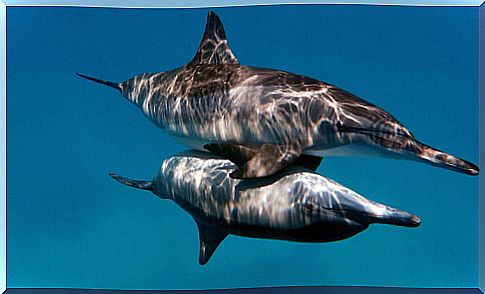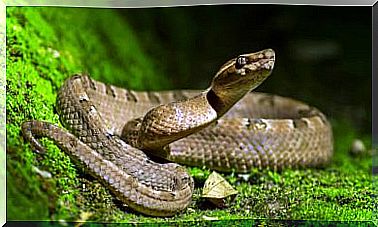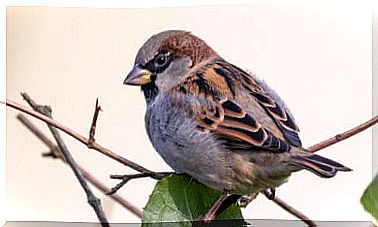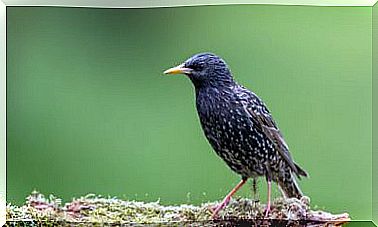Animals That Can Sleep With Half A Brain Awake

Have you ever wondered how whales or dolphins sleep? How do they get to the surface to breathe if they’re asleep? And what about birds that have taken a long flight? Believe it or not, there are animals that can sleep with half their brains awake.
Below we will tell you more about this curious phenomenon and the most outstanding cases that you can find in the animal kingdom.
Sleep and wakefulness
Living beings adapt our behavior and physiology to the environment through biological rhythms, that is, we live based on biological parameters, in a regular time interval. This interval can be hours, days, months … The rhythms that repeat around a day are called “circadian rhythms”.
Sleep and vigilance work like a circadian rhythm. Waking is the period that we remain awake, with sensory and motor activity; During sleep, animals “disconnect the senses from the environment” and reduce motor skills.
This change in brain activity can be recorded on an EEG and is recognized by the appearance of the waves it produces.

- Deep sleep consists of slow oscillations of great amplitude.
- On the other hand, during wakefulness the oscillations are fast and of low amplitude.
Thanks to this registry, sleep studies can be carried out. The pattern that the brain makes during sleep provides a lot of information about its functioning in species in which staying awake constantly is key to their survival.
What animals can sleep with half a brain awake?
Marine mammals, birds, and possibly some reptiles adopt a semi-alert state during the day. This state is necessary to continue breathing in the aquatic environment or to remain alert in a hostile environment.
To stay half awake, one part of the brain rests and the other is alert to the environment. This phenomenon is called “unihemispheric sleep” and has been studied in depth in the case of dolphins.
Dolphins sleep with only one brain hemisphere. During that time, they keep an eye open to keep an eye on what’s going on around them. Adults usually direct the open eye towards the companions of the herd and the young towards their mothers. The amazing thing about this is that everything happens during continuous swimming.

The unihemispheric dream of the dolphin
In proportion, dolphins have large brains. In fact, they are in second place in the ranking of brain sizes, after humans.
On the other hand, the brain of these animals presents numerous convolutions, which are the wrinkles that run through the cerebral hemispheres. However, their organization is different, for example, the region in charge of auditory processing is highly developed.
The large size of the corpus callosum, which is the physical connection between both hemispheres , is striking. It is thought that this is the key to explaining how there are animals that can sleep with half their brains awake.
There is an alternation between hemispheres, which allows them to rest fully while swimming and breathing with the hemisphere “awake”.

Sleeping with one eye open
In most mammals, most of the nerve fibers in the eye reach the opposite or contralateral hemisphere of the brain, and a smaller part to the hemisphere on the same side.
The dolphin is an exception. Each eye projects its nerve fibers to the contralateral hemisphere, this fact explains why they are able to open the opposite eye of the sleeping hemisphere.
Dolphins are social animals and often travel in groups. A constant vigilance in the herd can prevent attacks by predators, which can come from any direction and at any time, in an open habitat such as the ocean.
Unihemispheric sleep has also been observed in birds. They observe while sleeping with one eye to keep an eye on their surroundings when they are perched on the ground. It is also thought to be a valuable resource during migrations or long flights.









